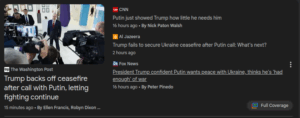When I prep, I store a variety of types of meals. I have a lot of rice and beans, as I can make those into dozens of different meals with very different spice pallets. There’s one type of meal that I do store at least a few of, for emergencies. That’s RTE, or Ready To Eat meals. These require either no prep at all, or just water and heat.
RTE meals are an important part of any prep for any situation. There are simply going to be times when you do not have the time or energy to cook, but you still need to eat. Having meals that require little to no preparation time will save you, time and again. I don’t mean for zombie apocalypse, either, though they work for that too. I mean for that moment when the power goes out right after you’ve finished 3 hours of snow blowing, and you’re exhausted and starving and now can’t use your stove. Or for when you’re backpacking, you get caught in a storm, and you’re stuck under a rock for a few hours for safety’s sake, and you need to eat.
While you can certainly go out and buy WiseFoods or any of the other “emergency bucket” type emergency meal kits, it’s very easy to assemble your own. Job Lots, Walmart, and even Amazon carry many very good options. It used to be that you’d save your cans of tuna for those emergencies, but now the tuna comes as part of an entire meal.
Starkist Tuna Snacks are the gold standard around here. We keep them in our go-bags, eat them as evening snacks, and they always go with me when I am camping away from the house. It’s fast and easy, and requires no heating. Simply slap the tuna on the cracker, and you’re ready to go.
Bumblebee Tuna Bowls are really yummy, and again, require no heating. There are three different kinds available on Amazon, but I’m told you can find a few more if you go looking. These include pasta, rice, and/or beans, and include vegetables as well. You’re getting a whole meal here. At 190 calories each, they’re a quick fix for a hungry person. They also do not contain any added sugars, so they can be eaten by diabetics. They are NOT good for people with Celiac though.
Starkist Smart Bowls are rice and beans with tuna, in a variety of flavors. These are the soft packs, so they stack easily in a backpack or go bag. They’re lower in fat and higher in carbs than the Bumblebee bowls, but neither of those are likely to be an issue when you’re dealing with an emergency situation.
At the slightly more bougie level, we have Cole’s Open and Eat Meals. These are a bit more expensive, but the quality is also higher. You get a larger meal, with more calories (250), and a variety of flavors. The reviews of them are pretty good, with the main sticking point being price. This is definitely one of those “you get what you pay for” moments.
And then there’s the ones I like best: Freshe Gourmet Canned Tuna. They have tuna and they have salmon, four flavors of each. You can buy them in bulk, and the price is a bit less than Cole’s. Each style has a different calorie amount listed, so you have to look at each of the flavors separately. Having eaten these both cold and warmed, I can say they are VERY yummy. I went out and bought a bunch of these at my earliest convenience after a friend introduced me to them.
There are chicken versions and salmon versions of all of the above. I would guess you can probably find ham and Spam ones, as well. I prefer to have the cans in my camping bin, because they can safely rattle around in the bottom of the bin and not be harmed. They will still be good to eat next summer, if I don’t get to them. The flat pack ones are best for backpacks and go bags. I usually slip mine into the front pouch of my backpack or in the interior flat area of my go bag, where they won’t be punctured. Read More












